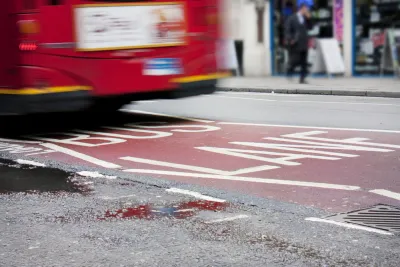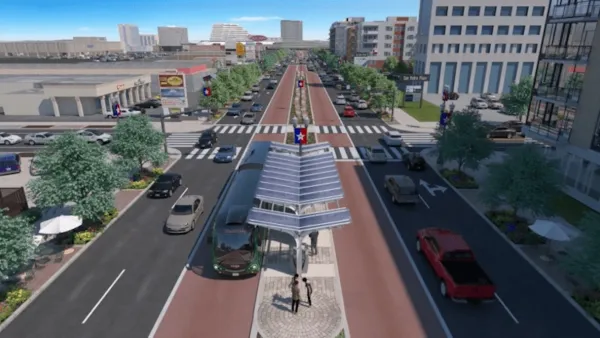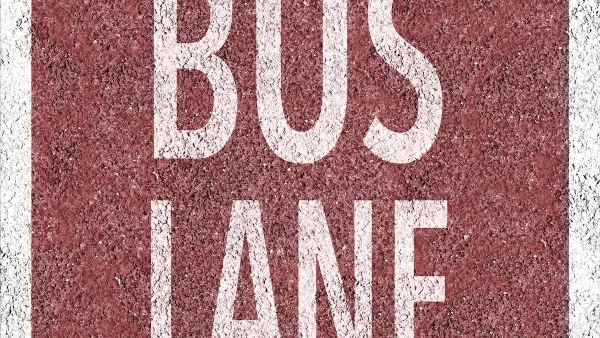Painting red dedicated bus lanes can improve travel times for bus riders, encourage more people to use public transit, and reduce emissions from transportation.

Writing in The Urbanist, Ryan DiRaimo calls on the city of Seattle to install dedicated bus lanes for all of its bus lines, citing evidence of reduced emissions and shorter bus commute times on streets that have done so.
According to DiRaimo, “The problem afflicting many of Seattle’s dedicated bus lanes is that they disappear right when they’re needed most at congested intersections or are clogged with too many cheating motorists. Deploying dedicated bus lanes widely and then enforcing them would fix that, however.”
DiRaimo writes that Seattle doesn’t need drawn-out public meetings to decide the issue. Painting bus lanes, cheaply and quickly, would definitively help the environment, eliminating the need for a SEPA review. When it comes to traffic, DiRaimo notes, “Well, traffic is constant. Traffic was here before the dedicated bus lanes, and it’s there today. Traffic existed before I-5 and I’m sure we are all aware it has never left. Traffic is a gas, not a liquid. You don’t control the flow by changing the size of the pipe, the gas fills up whatever space you give it.”
For DiRaimo, painting dedicated bus lanes is a no-brainer: “cheap, easy and smart.” DiiRaimo concludes, “The cost of paint is less than the cost of Seattle’s deadly year on the roads. This idea isn’t even that bold. It just makes sense.”
FULL STORY: Add Dedicated Bus Lanes for Every Route

National Parks Layoffs Will Cause Communities to Lose Billions
Thousands of essential park workers were laid off this week, just before the busy spring break season.

Retro-silient?: America’s First “Eco-burb,” The Woodlands Turns 50
A master-planned community north of Houston offers lessons on green infrastructure and resilient design, but falls short of its founder’s lofty affordability and walkability goals.

Delivering for America Plan Will Downgrade Mail Service in at Least 49.5 Percent of Zip Codes
Republican and Democrat lawmakers criticize the plan for its disproportionate negative impact on rural communities.

Test News Post 1
This is a summary

Test News Headline 46
Test for the image on the front page.

Balancing Bombs and Butterflies: How the National Guard Protects a Rare Species
The National Guard at Fort Indiantown Gap uses GIS technology and land management strategies to balance military training with conservation efforts, ensuring the survival of the rare eastern regal fritillary butterfly.
Urban Design for Planners 1: Software Tools
This six-course series explores essential urban design concepts using open source software and equips planners with the tools they need to participate fully in the urban design process.
Planning for Universal Design
Learn the tools for implementing Universal Design in planning regulations.
EMC Planning Group, Inc.
Planetizen
Planetizen
Mpact (formerly Rail~Volution)
Great Falls Development Authority, Inc.
HUDs Office of Policy Development and Research
NYU Wagner Graduate School of Public Service





























